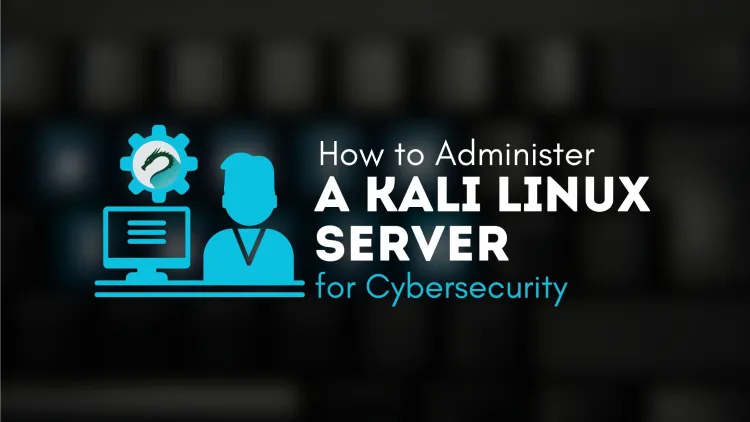How Can You Secure a Linux Server? The Complete Guide
Securing a Linux server involves multiple layers of protection, from regular updates and firewalls to disabling root access and using SSH key-based authentication. Additional steps include implementing intrusion detection tools like Fail2Ban, configuring SELinux or AppArmor, and enforcing strong password policies. Regular backups, log monitoring, and security audits further strengthen server security. By combining these best practices, administrators can protect their servers from unauthorized access and potential threats.

Securing a Linux server is a critical task for system administrators to protect sensitive data and prevent unauthorized access. With its open-source nature and extensive configurability, Linux is inherently secure, but there are several steps you can take to strengthen its defenses further. In this guide, we’ll explore best practices and tools to ensure your Linux server remains secure.

Why Linux Security Matters
Linux servers often host critical applications, websites, databases, and sensitive data. A compromised Linux server can lead to data breaches, downtime, and even reputational damage. Securing a server involves proactive measures to mitigate risks and maintain control over who can access and manipulate system resources.
Steps to Secure a Linux Server
1. Keep the System Updated
Regular updates are the foundation of a secure Linux server. Updates include patches for vulnerabilities and bugs that attackers could exploit.
-
Command to Update Packages:
-
Enable automatic updates using tools like
unattended-upgrades(Ubuntu) oryum-cron(CentOS).
2. Configure a Firewall
A properly configured firewall blocks unauthorized access and restricts unnecessary traffic.
-
Use UFW (Uncomplicated Firewall) for ease of configuration:
-
For advanced configurations, use iptables or firewalld to define specific rules.
3. Disable Root Login
Logging in as root increases the risk of brute-force attacks. Disable direct root access over SSH and create a non-root user with sudo privileges.
- Edit the SSH Configuration File:
Set
PermitRootLogin noand restart the SSH service:
4. Use SSH Key-Based Authentication
Replace password-based logins with SSH key authentication for enhanced security.
-
Generate a Key Pair on Your Local Machine:
-
Copy the Public Key to the Server:
5. Implement Intrusion Detection
Use tools like Fail2Ban and AIDE to detect and prevent malicious activities.
-
Fail2Ban: Blocks IPs after failed login attempts.
-
AIDE: Monitors file system changes for signs of tampering.
6. Configure Log Monitoring
Regularly monitor server logs for suspicious activities using tools like Logwatch or Syslog-ng.
- Install Logwatch:
7. Minimize Open Ports
Scan your server to identify open ports and close any unnecessary ones.
-
Command to Scan Ports:
-
Stop services that don’t need to be running.
8. Use Security Enhanced Linux (SELinux) or AppArmor
Both SELinux and AppArmor provide mandatory access control to restrict how applications interact with the system.
-
Enable SELinux on RHEL-based systems:
-
For AppArmor on Ubuntu:
9. Enforce Strong Password Policies
Use tools like PAM (Pluggable Authentication Modules) to enforce password complexity, expiration, and reuse rules.
- Edit PAM Configurations:
Add rules like
minlen=12for password length.
10. Backup Regularly
Regular backups ensure data can be restored in the event of a security breach or system failure.
- Use tools like rsync, Duplicity, or cloud services for automated backups.
Advanced Security Practices
1. Use a VPN for Remote Access
Protect SSH connections and other remote access methods by routing them through a secure Virtual Private Network (VPN).
2. Install an Antivirus Solution
Though rare, Linux servers can host malware. Use tools like ClamAV to scan for threats.
3. Regularly Audit Your System
Perform regular security audits using tools like Lynis to identify vulnerabilities.
Conclusion
Securing a Linux server is a continuous process that involves implementing best practices, monitoring for threats, and staying updated. By following the steps outlined above, you can significantly enhance your server’s security, protecting it from common vulnerabilities and advanced attacks.
FAQs
-
Why is it important to secure a Linux server?
- Securing a Linux server protects sensitive data, prevents unauthorized access, and ensures system integrity and uptime.
-
What are the first steps to secure a Linux server?
- Start by updating the system, configuring a firewall, and disabling root login to minimize vulnerabilities.
-
How can I secure SSH access?
- Use SSH key-based authentication, disable password logins, and change the default SSH port to enhance security.
-
What is Fail2Ban, and how does it help?
- Fail2Ban is a tool that blocks IP addresses after multiple failed login attempts, reducing the risk of brute-force attacks.
-
How does SELinux or AppArmor enhance security?
- SELinux and AppArmor enforce mandatory access control policies, restricting how applications interact with system resources.
-
Why should I monitor logs on a Linux server?
- Log monitoring helps identify suspicious activities or unauthorized access attempts, enabling prompt action.
-
How can I enforce strong password policies?
- Use PAM (Pluggable Authentication Modules) to set rules for password length, complexity, and expiration.
-
What is the role of backups in server security?
- Regular backups ensure that critical data can be restored in case of a breach, system failure, or accidental deletion.
-
How do I check for open ports on my Linux server?
- Use tools like
netstatorssto identify open ports and close any that are unnecessary.
- Use tools like
-
Are antivirus tools necessary for Linux servers?
- While Linux is less prone to viruses, tools like ClamAV can detect malware or threats, especially on servers handling file uploads.











![Top 10 Ethical Hackers in the World [2025]](https://www.webasha.com/blog/uploads/images/202408/image_100x75_66c2f983c207b.webp)



![[2025] Top 100+ VAPT Interview Questions and Answers](https://www.webasha.com/blog/uploads/images/image_100x75_6512b1e4b64f7.jpg)







